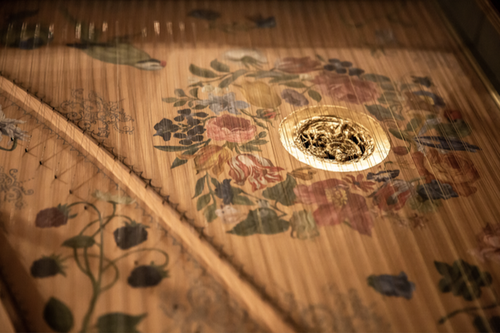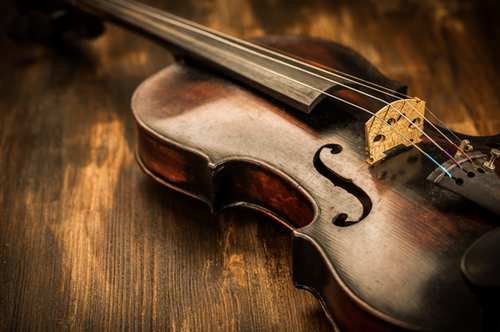Background

In the early 20th century, an increased interest in “Early Music” boosted the demand for original instruments [1]. As a result, many instrument collections began substantial restoration work: in 1938, this was the case for the collection in the Metropolitan Museum of Art in New York. Subsequently, various experts, such as Pollens [2] and Wraight [3], have agreed that the restoration of the collection was dealt in a most unfortunate manner, as many original parts were replaced and destroyed, including many parts of the oldest surviving piano (ca. 1720) by inventor Cristofori. This was not an isolated case: some later musicologists, such as Barnes [4], identified commercial aspiration as a primary factor in the restoration agenda of the early 20th century. According to this source, restored instruments attract crowds, but “destroy evidence.” A change of paradigm in restoration and preservation occurred in the 1960s, when various codes of ethics appeared [5,6] and by the 1980s, many museum curators had shifted their efforts towards the construction of copies, or replicas. This way, the original instruments could be preserved, whilst at the same time an impression of the sound could be given [7]. It can also be argued, however, that copies suffer from the same problems as the originals: eventually, they will fall into disrepair.

Recent approaches to the digitisation of musical instruments. In recent times, curators and conservators have attempted to overcome the problem of longevity by digitising the sounds of the instruments in their collections. Sampling-based techniques are a common, though labour-intensive and delicate option. The recent case of the sampling of a few Stradivarius instruments in Cremona, Italy, embodies the problems of advanced sampling based techniques a traffic ban was imposed in the city, for several days, in order to allow the sampling with minimal interference [8].
Motivations of NEMUS. Despite the ever-growing fidelity of the available recordings, sampling-related techniques do not entirely solve the problem of preservation. In particular, instruments out of playing condition (a large majority in museum collections) cannot be sampled. There is, however, an even more urgent aspect: the mere storage of waveforms is insufficient to understand the enormous documental evidence borne by historical instruments [9]. Karp [10,11] advocates for a deeper understanding of musical instruments, so that enough knowledge is generated to make them as “copyable” as possible. This deeper approach may be extended to include the analysis and reproduction of the acoustical and sounding qualities of an instrument. NEMUS has been conceived in order to address such urgency. The project will address the problem of creating faithful and sustainable digital replicas of historical musical instruments: these will be software instruments, playable with a computer and an appropriate controller. It will do so with no need for recordings, so that copies of instruments out of playing condition can be produced. The project will develop the most accurate and efficient mathematical models ever designed for this purpose, within the more general context of sound synthesis by physics-based modelling. The original instruments will not be taken apart or modified in any way: non-intrusive knowledge of the instruments’ geometry and material properties will be enough to inform the models. The project team will work in close contact with the musical instruments museums, such as the Tagliavini Collection in Bologna, and the Russell Collection at the University of Edinburgh, Scotland.
[1] M. Oey. Some problems in conservation in museum collections. In Proceedings of the Association of North American Graduate Programs in Conservation, Winterthur, USA, 2006.
[2] S. Pollens. The Manual of Musical Instruments Conservation. Cambridge University Press, Cambridge, UK, 2015.
[3] D. Wraight. Recent approaches in understanding Cristofori’s fortepiano. Early Music, 34:635–644, 2006.
[4] J. Barnes. Does restoration destroy evidence? Early Music, 8(2):213–218, 1980.
[5] International Council on Monuments and Sites. International charter for the conservation and restoration of monuments and sites. Venice, Italy, 1964.
[6] American Institute for Conservation. Code of ethics and guidelines for practice. New York, USA, 1963.
[7] J. Barnes. Making a Spinet by Traditional Methods. Peacock Press, Mytholmroyd, UK, 1985.
[8] M. Paradiso. To save the sound of a Stradivarius, a whole city must keep quiet. The New York Times [Link], 17 January 2019. (Accessed June 2019)
[9] J.R. Watson. Historical musical instruments: A claim to use, an obligation to preserve. J Am Music Inst Soc., 17:62–82, 1991.
[10] C. Karp. Restoration, conservation, repair and maintenance. Early Music, 7:79–84, 1979.
[11] C. Karp. Musical instruments in museums. Int J Museum Manage Curator., 4(2):179–182, 1985.